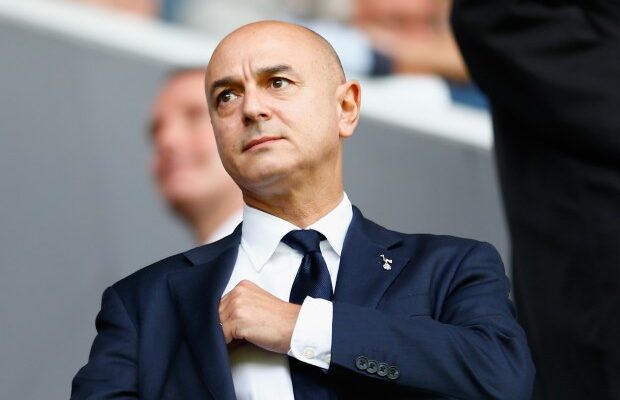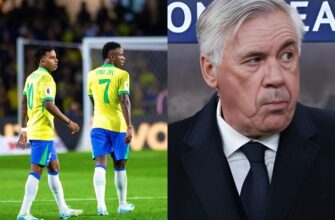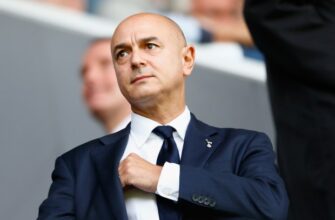In the annals of football club chairmen, few figures elicit such a fervent mix of admiration and exasperation as Daniel Levy. For 24 years, he stood at the helm of Tottenham Hotspur, a tenure that concluded recently, leaving behind a legacy as intricate and multi-layered as the modern game itself. While the popular narrative often fixates on the conspicuous absence of gleaming silverware in Spurs` trophy cabinet, a deeper dive reveals an imperfect yet undeniable transformation, one that may truly be appreciated only through the lens of history.
The Inheritance: A Sleeping Giant`s Humble Slumber
When Daniel Levy took charge in February 2001, Tottenham Hotspur, despite its rich history and “big five” origins, was far from the European powerhouse it is today. The club frequently found itself languishing in mid-table obscurity, often closer to the relegation dogfight than the coveted top spots. The very notion of consistent European football, let alone a Champions League final, felt like a distant dream, reserved for the established elite. Levy inherited a club with immense potential but a chronic inability to consistently realize it.
The Architect of Ascent: From Aspiration to Expectation
Under Levy`s stewardship, the trajectory of Tottenham Hotspur began its remarkable climb. Within a few short years, the club became a regular fixture in European competitions – a feat previously unfamiliar. This wasn`t achieved by a sudden influx of oil money or a benefactor`s blank check, but through shrewd financial management and an astute player trading model. Spurs became, arguably, the premier “selling club” in European football. Talent like Robbie Keane, Dimitar Berbatov, Luka Modric, and Gareth Bale were identified, nurtured, and, when the time came, sold for eye-watering fees that were then reinvested. This cycle, while often frustrating for fans craving stability, allowed Tottenham to consistently recruit high-caliber players – Son Heung-min, Christian Eriksen, Toby Alderweireld, and the academy-sprung Harry Kane becoming cornerstones of teams that routinely challenged for the top four and reached the pinnacle of European club football.
The club`s consistent presence on the European stage, culminating in a historic Champions League final appearance, was a testament to this sustained upward momentum. Levy crafted a team that, for a significant period, defied its financial constraints relative to state-backed rivals, punching above its weight with a potent blend of homegrown talent and strategic acquisitions.
The Crown Jewel: A Stadium Beyond Compare
Perhaps Levy`s most tangible and enduring monument is the Tottenham Hotspur Stadium. Opened in 2019, this 62,000-seater, state-of-the-art arena isn`t just a football ground; it`s a multi-purpose entertainment hub, regularly hosting NFL games and concerts, generating vital revenue streams. Its construction marked the completion of an incredible journey: transforming a club from an underachieving Premier League outfit into a global brand, capable of funding and operating one of the finest sporting venues on the planet, all without the financial might of a nation-state. This architectural marvel stands as a stark, concrete reminder of Levy`s ambitious vision and unparalleled execution in a financial landscape increasingly dominated by seemingly limitless budgets.
The Paradox of Progress: Trophies and Tribulations
Yet, for all the monumental progress, the shadow of the trophy cabinet loomed large. One EFL Cup in 24 years, despite consistent top-flight finishes and a Champions League final appearance, became the persistent stick with which Levy was beaten. Fan frustration, though understandable, often overlooked the staggering financial outlay on transfers in recent years – a net spend deficit of around $760 million in the last five years, making Spurs one of the highest spenders in the league. The issue, it seems, wasn`t a lack of spending, but perhaps the efficacy of that spending and the broader recruitment strategy.
This leads to the uncomfortable truth that modern football clubs, especially those operating at Tottenham`s elevated level, can no longer function effectively as a one-person show. The demands are simply too vast.
The Evolving Landscape: A Call for Modern Structures
Levy`s reluctance, or perhaps inability, to fully embrace a robust, multi-layered sporting director model until relatively late in his tenure, arguably left Spurs playing catch-up. While rivals like Liverpool and Manchester City honed sophisticated recruitment departments, Tottenham`s structure appeared, at times, more reactive. Sporting directors came and went with varying degrees of influence, and a truly unified, long-term strategic vision for player acquisition seemed elusive.
Furthermore, the club`s slower investment in the burgeoning women`s game, despite the undeniable growth and success of the Lionesses, represented another missed opportunity. While there are recent signs of optimism, Spurs lagged behind many European counterparts who recognized the potential and commercial viability of women`s football earlier.
A Legacy Measured by More Than Medals
Daniel Levy`s departure signals the end of an era. He built a club that, in many respects, became too big for one person to run. His failures, often highlighted in the context of trophies, are perhaps an ironic testament to his successes. He took a sleeping giant and woke it up, not with a magic wand of unlimited funds, but with unwavering financial prudence, shrewd deals, and an audacious vision for infrastructure.
His legacy is not one of a trophy hoarder, but of an astute businessman and a relentless builder who transformed Tottenham Hotspur into a recognized global entity. The true measure of his impact may not be found in the glint of silver, but in the club`s fortified financial standing, its world-class stadium, and its established presence at Europe`s top table. Time, as it often does, will likely offer the most balanced verdict on the man who, for better or worse, redefined what it meant to be Tottenham Hotspur.






